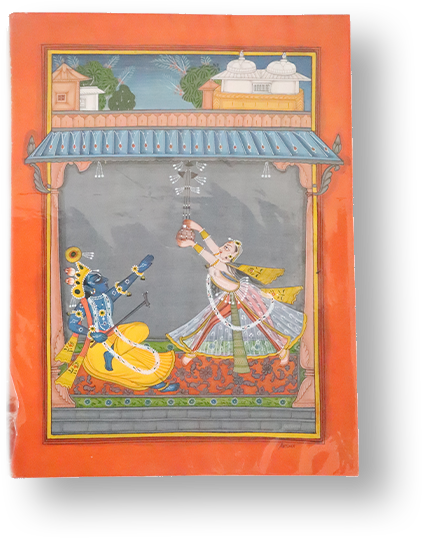32.732998°N,74.864273°E
Poonch Jammu and Kashmir
Altitude
5,300m above sea level
Gender
51% male
49% female
2% trans
Population
476,835
Intricate paintings of Hindu gods, mythical stories of emperors, and landscape evolved as a distinct style of painting in the 17th century in the Basholi district of Kathua which is known as Jammu today.
This form of painting is handed down by master painter to a handful of students. Not many share their secrets of colour mixing though.

These paintings are treated as valuable as they are expensive. These are usually bought and displayed in government buildings as local households cannot afford to buy them.

Step 1
Themes from poems, stories or epics are chosen and researched for the painting.
The surface, pigments and painting tools are not available in the local market and are sourced throughout the year from Jaipur.
Step 2
Raw material such as colours
sea shells
acaia glue
squirrel hair painting brushes.
and basli sheets are procured all the wayfrom Jaipur.
Step 3
To make the palette, coloured stone and acacia glue is used.
Acaia is boiled and kept overnight.
Sea shells are used to mix colours in. Their smooth surface helps the mixing of colours.

Step 4
Primer is applied on basli sheets to create a base.

Step 5
Drawing is done with pencil and colours are placed according to the reference image.

Step 6
The painting is then turned over on a piece of plain marble or tile and burnished to achieve luster in the painting.

Step 7
The painter holds their breath while adding details with a fine brush.
Due to the intricate nature of the paintings, the artists are not even allowed to listen to music because if they accidently sing along, they may spoil the painting.


